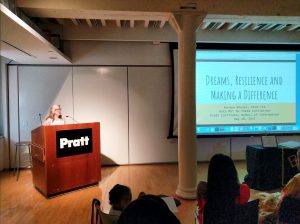THE OCCASIONAL MENTOR
A monthly(ish) column based on questions I’ve answered on Quora, heard on Slack groups, and other career advice I’ve given over the prior month. Hope you like it, but feel free to challenge me in the comments, if you have a different experience. Below are questions I answered in June.
How are the user experience design and data science professions connected with each other?
June 6, 2018
According to Wikipedia:
“Data science is an interdisciplinary field that uses scientific methods, processes, algorithms and systems to extract knowledge and insights from data in various forms, both structured and unstructured, similar to data mining.”
A data scientist is a person who is skilled in quantitative research and can formulate a study, analyze the results and create reports to inform other people about the topic of study. They may work with spreadsheets, statistical programs, graphical interfaces, and programming languages like Python, Java, JSON, R, SQL, MATLAB, SAS, C and F#, among others. They may also work with text analysis software, geographic information systems (GIS) and visualization tools like Tableau and Gephi.
UX designers use the results of quantitative research, created by data scientists and UX researchers. The reports help the designers understand user behavior, based on data collected from digital product user logs, web analytics, or quantitative user research tests. These data may describe typical user paths and places where users tend to drop off or bounce away from the app. It could include the results of A/B tests, card sorts, heatmaps, user flow diagrams and demographic and conversion data.
UX designers may also use the output of data studies in the content of the products they are designing for. These studies would be relevant to the subject of the product, not user generated data. For example, an infographic or other visualization that illustrates aspects of the product: weather maps, income disparity charts, election results.
What is the difference between a content strategist and a UX writer?
June 6, 2018
A content strategist creates a plan for all of the company’s reusable content assets. This can include graphics, text, labels, photographs, charts, PDFs, videos, audio files, documentation, directories, etc. The content strategist creates policies and manages the programs that house and govern content. This could include inventory, storage, workflow and governance of content (such as who has access to what type of content, who is responsible for updating or archiving content, who can delete or create new content).
A UX writer prepares written content for use in any number of media, including advertising, apps and websites, video/audio/animation, PR, etc. with a focus on maintaining a consistent user experience across all channels. This can include articles, product descriptions, documentation, headings, headlines, labels, microcopy, essentially anything that needs to be written in words.
Is the digital humanities an enduring movement or a trend?
June 6, 2018
I think it will endure. Academics need to create original research. Digital projects and analysis represents an exciting way to discover new things about subjects that otherwise seem to be studied to death. Applied to art, literature, history and other subjects in the humanities, digital projects open up a whole frontier of analytics and visualization where computational study used to be rare. This can take the form of text analysis, network diagramming, geographic information systems, 3D printing and even the creation of virtual worlds.
Where it can hit a road block is the fact that people who pursue humanities don’t often have the skills or competence required to utilize computational tools in their research. This isn’t their fault, it just happens to be rare in humanities curricula. That is why many universities are investing in developing IT and library staff who have these skills.
Ultimately, schools will include more and more digital studies electives in humanities programs. So like art and art history programs now may include chemistry and material science in units on art preservation, and English departments will have more an more computer scientists on hand to help with digital humanities projects.

